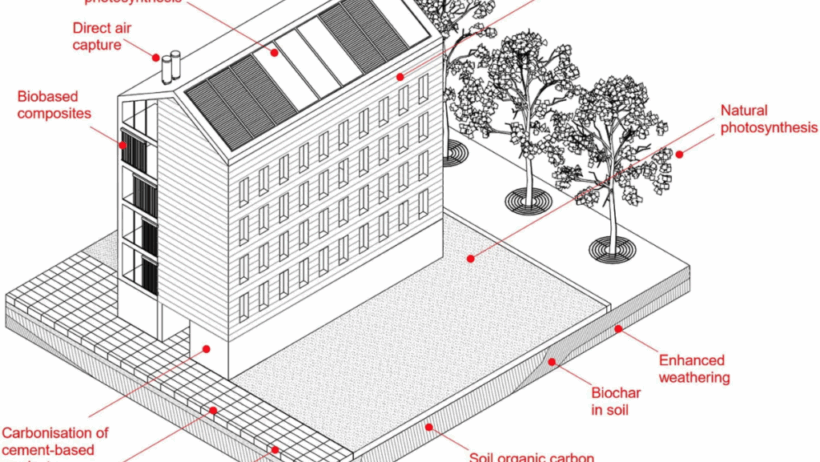Buildings are intrinsic to modern life, housing our families, workplaces, and recreational spaces. Yet, as we delve deeper into the complexities of climate change, an unsettling question emerges: How are our beloved edifices contributing to the very crisis we are striving to resolve? To comprehend this paradox, we must first consider the multitude of ways in which buildings impact our environment.
From the materials used in construction to the energy consumed during operation, the built environment is a significant contributor to greenhouse gas emissions. Globally, the construction and operation of buildings account for approximately 40% of total energy consumption and nearly 30% of carbon dioxide emissions. These statistics prompt a thought-provoking challenge: How can we evolve our architectural practices to reconcile the functionality of buildings with the necessity of environmental stewardship?
One of the primary culprits of the carbon footprint associated with buildings is the materials used in their construction. Traditional materials such as concrete, steel, and bricks are not only energy-intensive to produce but also impose severe environmental degradation through resource extraction, transportation, and waste production. The hidden environmental costs of these materials permeate the life cycle of buildings, casting a long shadow over their utility.
However, alternative materials are emerging. Innovations like cross-laminated timber, recycled steel, and even mycelium-based composites are signaling a shift towards a more sustainable paradigm. This evolution in material science presents an opportunity to significantly mitigate the impact of new constructions. But are architects and builders ready to embrace these alternatives in a significant way? The challenge lies not just in innovation but in widespread adoption.
Next in the trajectory of building-related emissions is energy consumption during the operational phase. Heating, cooling, and electrical systems can contribute substantially to a building’s overall footprint. Conventional systems often rely heavily on fossil fuels, exacerbating emissions. Integrating energy-efficient technologies is not merely a guarantee of cost savings; it’s also an imperative for sustainability. From passive solar designs to the implementation of smart home technologies, there lies a vast potential to revolutionize how buildings consume energy.
Moreover, the advent of renewable energy sources presents a transformative opportunity. Buildings equipped with solar panels or geothermal heating systems can produce their own energy, drastically reducing dependence on non-renewable sources. However, the question remains: how can we incentivize the retrofitting of existing buildings to adopt these renewable technologies effectively? Tackling this question will demand collaboration across multiple sectors, including government policy, financial incentives, and public awareness campaigns.
It is equally crucial to consider the location and orientation of buildings. Urban sprawl often leads to inefficient land use, increased transportation emissions, and disconnection from vital ecosystems. Compact city designs and mixed-use developments can contribute significantly to reducing the overall carbon footprint by decreasing the reliance on automobiles. But shifting public perception towards denser, multi-functional living environments poses its own challenges. Communities must grapple with the trade-off between their cherished backyards and the necessity for increased density in urban planning.
As we advance in our discussions on sustainable architecture, we must not overlook the importance of the building’s lifecycle. The concept of circular economy—where waste is minimized, and materials are reused—is gaining traction. Building with deconstructability in mind means designing structures that can be easily dismantled and their materials repurposed instead of being sent to landfills. This begs an inspiring exploration: can we educate future generations of architects and builders to think in loops, not lines? The possibilities for reimagining our approach to references and methodologies can lead to a groundbreaking shift in environmental consciousness.
Engaging with these multifaceted challenges requires holistic solutions. As stakeholders in the construction and urban development industries, it becomes imperative to foster a culture of sustainability. This can range from educational initiatives in trade schools and universities to workshops focused on upskilling the current workforce in green building practices. By embedding sustainability into the core philosophy of building practices, we can cultivate a new generation of professionals committed to minimizing environmental impact.
Local governments play an instrumental role in shaping the future of building practices through policy and regulation. By developing stringent building codes that favor energy-efficient designs and low-impact materials, municipalities can drive innovation and facilitate a smoother transition towards more sustainable practices. Public-private partnerships may emerge as a vital component in subsidizing these green initiatives, creating a supportive ecosystem for sustainable development.
Ultimately, the pathway to a more sustainable built environment is replete with challenges, yet it is also brimming with possibilities. Each of us can participate in this critical transition by advocating for sustainability in our communities, supporting policies that prioritize eco-friendly practices, and making personal choices that reflect a commitment to environmental integrity. Through collective action and innovation, we can transform the narrative surrounding buildings from one of contribution to climate change into a story of resilience, progressive adaptation, and environmental healing.
As we contemplate the implications of our built environments, let’s pose another question: What legacy do we wish to leave for future generations? The choices we make today will echo through time. Let us ensure they resonate with a harmonious balance between humanity and nature.




